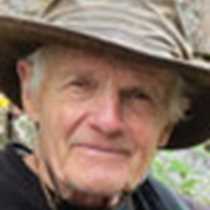Dawn finds us anchored on a flat gently rolling sea at the mouth of Windy Bay. Clouds hang at treetop level and oystercatchers and eagles scream from the nearby shore. We prepare to visit one of the most spectacular forests on the planet.
Once on shore we find ourselves immersed in a world of green. The deep moss covers the ground a foot deep and festoons stumps, logs, fallen branches, and huge Sitka spruce. We stand quietly in awe listening to the songs of Pacific wrens, Townsend warblers, and the croak of ravens. The cool breath of the forest is scented with spruce and rotting wood.
Soon we are met by a Haida Gwaii Watchman who leads us on a well-marked trail under huge ‘nurse’ logs that are supporting a new forest of Hemlock trees. We come around a corner and are surprised to see the enormous bulk of a giant Sitka spruce tree. It stretches far into the air. Our guide says its age is between 800-900 years; it would take a dozen people holding hands to surround the tree.
Further down the mossy trail we come to CMTs: Culturally modified trees that bore the scars of somebody cutting the cedar’s bark low down many years ago and pulling upward to a second cut. This fibre could then be made into hats, baskets and clothing.
After we return to the ship for lunch, Linda Tollas enthralls us with a description of the intricate nature of Haida relationships based on the two moities, eagles and ravens. We learn about the matrilineal system that defines how the chief’s status is inherited. In a second talk Linda brings her culture alive by describing how she made the beautiful cedar hat she is wearing. Linda’s presence on the ship over the last few days made our experiences more meaningful.







